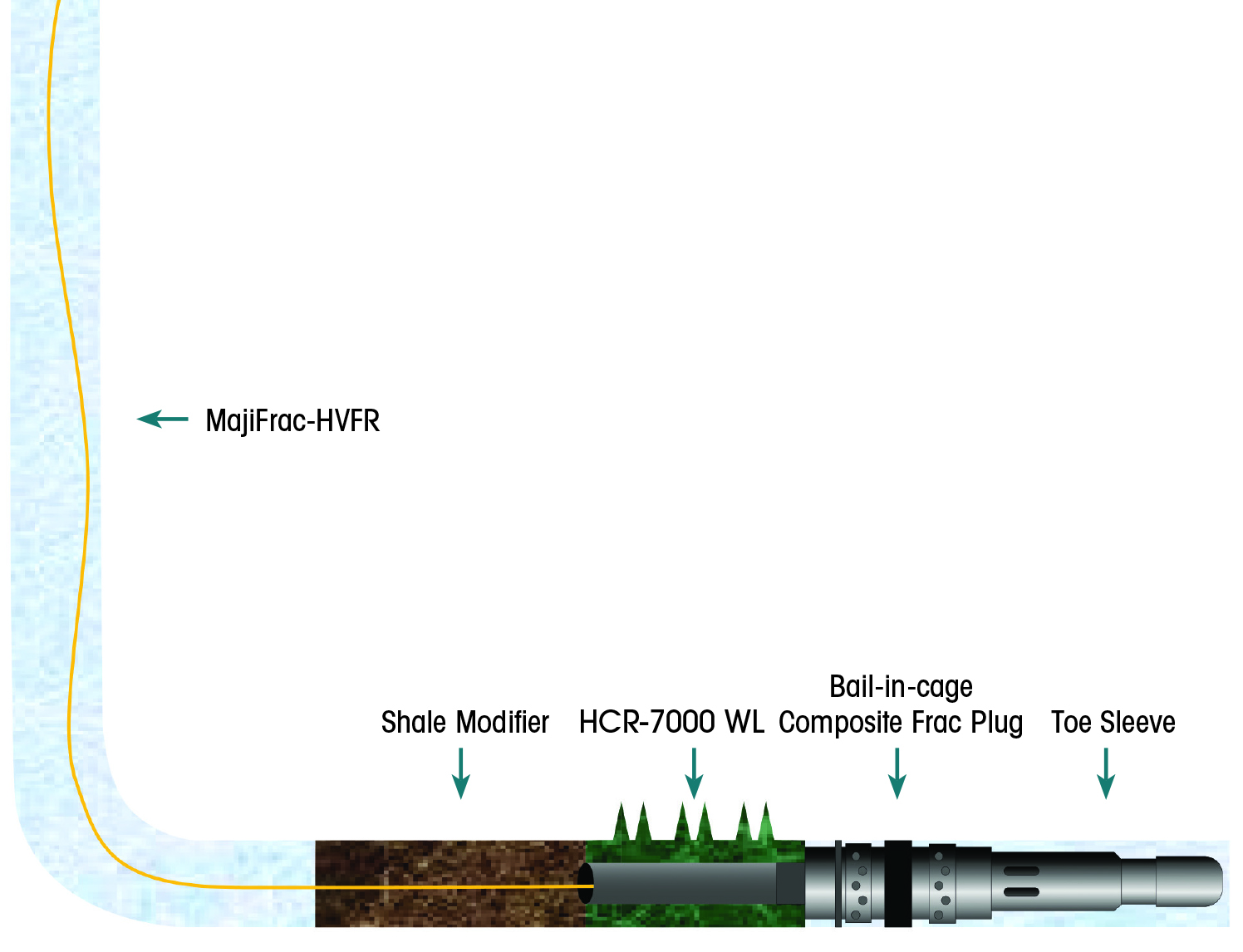Learn more about Hart Energy Conferences
Get our latest conference schedules, updates and insights straight to your inbox.
[Editor's note: This story originally appeared in the February 2020 edition of E&P. Subscribe to the magazine here.]
The mission to drill and complete new wells in U.S. unconventional shale plays has shifted dramatically in recent years from deploying cookie-cutter and “pump-and-pray” fracturing treatments to a sector driven by economics, advanced technology and greater consideration for the environment. Therefore, increasing recovery factors and improving operational efficiency are paramount in today’s fluctuating oil and gas market.
Roughly 70% of wells being drilled in the Eagle Ford are infill wells, as are 50% of those wells drilled in the Permian Basin. Infill drilling brings with it a high level of risk of damage to the parent wells from frac-driven interactions, where cleanouts may be needed and reduced production may be inevitable. The infill, or child well, is more than likely to underperform compared to the production of the parent well. As the industry recognizes the inevitability of avoiding frac-driven interactions, particularly if missed reserves from previous field development are going to be produced, the demand to design and implement better fracturing treatments with leaner expenditures will no doubt continue to grow.
Decreasing fluid costs and volumes, pump downtimes, fracturing treatment time, horsepower requirements and plug mill-out times are some of the ways that operational efficiency can be achieved alongside stage cost reduction. Advanced chemistries that can access the nanonetwork around the fracture and increase the recovery of oil flowback is another way to drive efficiencies.
Increasing recovery
In April 2019, the U.S. Department of Energy estimated that crude oil production from shale and other tight formations accounted for about 60% (7.4 MMbbl/d) of U.S. output. While unconventional wells produce about 35% less wastewater per unit of gas than conventional wells, the number of wells and amount of oil and gas being produced mean that water use has increased by as much as 500% in some areas.
During a fracturing treatment, it is not uncommon to pump tens of millions of gallons of fluid into a single well. This procedure can result in escalating cost and risk associated with not only handling the water but also managing the energy required to pump the fluids from the surface far into the formation. Furthermore, production potential is often compromised as inaccessible oil remains trapped in the unfractured nanonetwork surrounding the fracture.
To increase production and tackle the intensive fracturing water and pumping requirements of shale formations and the challenges associated with using produced water in fracturing treatments, Tendeka has developed the MajiFrac Plus Solution, a combined suite of environmentally responsible technologies. The strategically sourced portfolio of high-performance tools and chemical systems aims to reduce water use and pumping time during completion operations. The overall result is less pump time, lower cost, reduced water consumption and enhanced production.
The components of the system can be used individually or sequentially to optimize fluid distribution across the interval. This can lead to more contact areas with the formation resulting in increased production. The system includes the company’s acid-resistant FracRight fully composite frac plug, a wireline-friendly modified spearhead acid system, ShaleModifier and a range of high-viscosity friction reducers.

System details
Comprising high-performance, composite material, FracRight plugs can be milled quickly and easily. Rated to 10,000 psi at 350 F and available in a full range of sizes, the tool incorporates a pumpdown feature to minimize fluid bypass, reducing the amount of water required to place the plug at setting depth and allows placement of particular fluid spacers behind the plug. The fast mill-out time also reduces operational schedules with small remaining debris that can be readily produced back to the surface.
The Enviro-Syn-HCR-7000-WL is applied in a combination of spotting the spearhead acid with the frac plug and perforating guns. This modified spearhead acid system boasts superior ultralong-term corrosion protection compared to hydrochloric acid or urea-based acids. It can be prepared in produced water and utilized and exposed to perforating tools and wireline at high temperatures over long periods with minimal effect. It allows operators to pump acid with the perforating guns and plug, reducing the time per stage and saving considerable water per stage where applicable.
Harmless to the skin, it minimizes unsafe exposure levels and effluent rates as well as costly transport and storage. Not only is a superior breakdown possible with the system, perforations also are created, resulting in more efficient perforation cleaning, helping to place the fracturing treatment and access energy more uniformly.
Behind the acid, there is a hydrophobic oil-based surface modifier that is synthesized with an organometallic binder that adheres to exposed silicon oxide sites, changing the surface energy of the rock. This fluid, optimized using nanofluidic reservoir analogs, has a superior injection displacement efficiency in oilwet nanostructures as small as 100 nm and binds to the walls of the nanonetwork structure, creating a permanent pathway free of high capillary pressures, allowing oil to be recovered from the nanomatrix.
It is pumped as a pre-pad stage to the main fracturing treatment and can increase oil flow recovery from shale formations during initial completions and remedial treatments.
The ShaleModifier has the potential for use in huff-and-puff treatments to help inject more gas faster, thereby decreasing soaking times and increasing the overall amount of oil recovered.
The MajiFrac-HVFR-5SA is a high-viscosity friction reducer (HVFR) designed for tough produced water conditions. It can carry proppant at higher loadings in produced water due to its elasticity properties, which are enhanced in produced water. Designed and manufactured in-house by the company’s production enhancement team, this gives improved drag reduction without the need for a booster at ultralow dosages. The performance of the MajiFrac-HVFR-5SA at the ultralow dosages means that operators that are pumping emulsion HVFR can expect to see friction reduction stage cost savings by as much as 58%.
Complete and customized systems
With increased pressure to restrict expenditure, many operators in the sector have already eradicated many conventional additives, such as surfactants as flowback agents, that were once a staple of the fracturing fluid system. Nonetheless, the appetite for disruptive advanced completion technology and production enhancement solutions with the potential to increase low recovery factors still exists. This is on the condition that performance can be demonstrated and acceptable production results achieved at economical rates.
Likewise, EOR treatments from legacy shale wells are also on an upward trend to capture and extract additional reserves from within the complex nanonetwork matrix of fractured wells.
Ultimately, to maximize return on investment, reducing the time and cost to complete wells in unconventional shale plays is critical, particularly given the increasing trend to pump more proppant per thousand feet as well as the associated increase in volumes of fracturing fluids.
Bringing a credible, combined and economical package of hydraulic fracturing tools closer to the operator, which can be tailored to meet specific water quality and demands, is a leap forward from the fragmented, “fingers crossed” approach in the shale plays of old.
References available.
Recommended Reading
President: Financial Debt for Mexico's Pemex Totaled $106.8B End of 2023
2024-02-21 - President Andres Manuel Lopez Obrador revealed the debt data in a chart from a presentation on Pemex at a government press conference.
Some Payne, But Mostly Gain for H&P in Q4 2023
2024-01-31 - Helmerich & Payne’s revenue grew internationally and in North America but declined in the Gulf of Mexico compared to the previous quarter.
Kimmeridge Fast Forwards on SilverBow with Takeover Bid
2024-03-13 - Investment firm Kimmeridge Energy Management, which first asked for additional SilverBow Resources board seats, has followed up with a buyout offer. A deal would make a nearly 1 Bcfe/d Eagle Ford pureplay.
Private Equity: Seeking ‘Scottie Pippen’ Plays, If Not Another Michael Jordan
2024-01-25 - The Permian’s Tier 1 acreage opportunities for startup E&Ps are dwindling. Investors are beginning to look elsewhere.
M4E Lithium Closes Funding for Brazilian Lithium Exploration
2024-03-15 - M4E’s financing package includes an equity investment, a royalty purchase and an option for a strategic offtake agreement.




